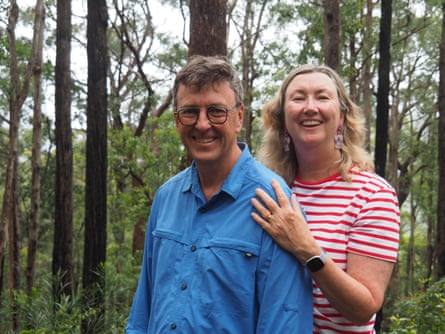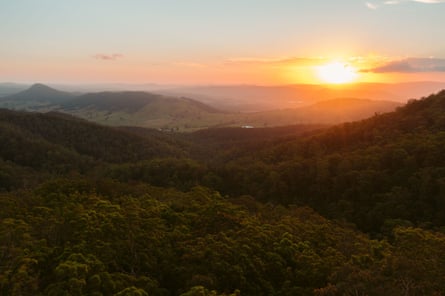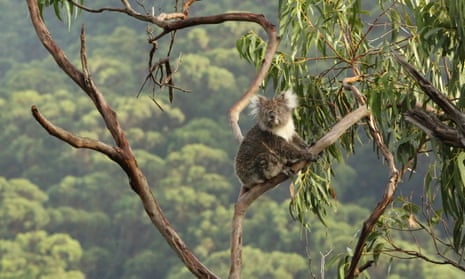Almost 4,000 hectares of koala habitat in the Hunter region of New South Wales will be protected after the land was privately acquired for conservation.
Sydney philanthropists Andrew and Jane Clifford bought the property north of Newcastle, which scientists from the Australian Wildlife Conservancy (AWC) estimate is habitat for more than 100 vertebrate species, including the endangered koala and 11 other animals listed as threatened.
The property was previously used for small-scale timber harvesting, but its ecosystems – which range from dry sclerophyll forests at its peaks to wet rainforest in the deeper gullies – are mostly intact, making it well-suited for conservation.
The property is surrounded on three sides by largely intact forest, including the Ghin-Doo-Ee national park to the east and two other privately-owned forested blocks. Connected forests are important for wildlife conservation because they allow animals to move freely from place to place.
The AWC will manage the site under a conservation agreement, focusing on weed management, feral animal control and fire management, with the ecological improvements tracked and measured on a yearly basis.
The conservancy’s chief executive, Tim Allard, said the “extraordinary opportunity” that had been gifted to the conservancy by two of its longtime supporters would allow ecologists to restore crucial habitat for species including the yellow-bellied glider, the golden-tipped bat, glossy-black cockatoos and the tiny green-thighed frog, as well as koalas.

The koala populations of NSW, Queensland and the Australian Capital Territory were listed as endangered this year, and a 2020 NSW parliamentary inquiry found the species would be extinct in the state by 2050 unless governments took urgent action to protect koala habitat and turn the declines around.
“The success of this new sanctuary is important not only for the future of native wildlife but for the conservation landscape of Australia,” Allard said.
“It will demonstrate to the rest of the world what can be done with private land to create better outcomes for Australia’s biodiversity and provides hope for threatened native wildlife and their habitats.”
The AWC manages several sanctuaries spread across different landscapes and species in Australia. The Hunter property is the organisation’s first sanctuary in the tall forests of south-east Australia.
Many of the conservancy’s sanctuaries are remote but Andrew Clifford said he hoped the Hunter site could eventually be visited by members of the public interested in understanding conservation work and the plight of Australia’s beloved wildlife.
“There’s a real problem in terms of the survival of our endangered species,” Clifford said.
after newsletter promotion
He said conservation work on private land, including through science-focused organisations such as the AWC, was “one of the ways that we can change the dire circumstances that we face”.
“It’s not just a case of buying some land and locking it up … it’s (about) the outcomes and our endangered species making a comeback.”
Governments are increasingly looking to private landholders to enhance conservation efforts. The Australian Land Conservation Alliance has said more support for voluntary conservation by landholders is needed because more than 60% of land in Australia is privately held but less than 2% of this area is managed for nature.

Earlier this year, the Victorian government announced a $31m boost for private land conservation work.
Nationally, the federal government has announced plans for a private land restoration market, though its design has been the subject of fierce debate after it was initially described as a “green Wall street”.
Environment groups and scientists have also called on the federal government to increase public funding for nature conservation to bring the government budget for threatened species recovery into line with what scientists have said is needed.
